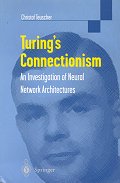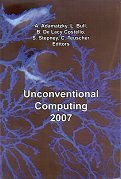Turing’s connectionism provides a detailed and in-depth
analysis of Turing’s almost forgotten ideas on oonnectionist machines.
In a little known paper entitled “Intelligent Machinery”,
Turing already investigated connections models as early as 1948.
Unfortunately, his work was dismissed by his employer as a
“schoolboy essay“ and went unpublished until 1968, 14 years after his death.
in this book, Christof Teuscher analyzes all aspects of Turing’s “unorganized machines”. Turing himself also proposed a sort of genetic algorithm to train the networks. This idea has been resumed by the author and genetic algorithms are used to build and train Turing’s unorganized machines. Teuscher’s work starts from Turing’s initial ideas, but importantly goes beyond them. Many new kinds of machines and new aspects are considered, e.g., hardware implementation, analysis of the complex dynamics of the networks, hypercomputation, and learning algorithms.


